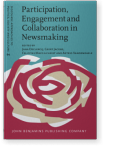Chapter 5
“Somehow I'm Always Writing”
On the meaning of transdisciplinary analyses of text production in media change
This paper shows the value that transdisciplinarity can add to media linguistics. It does so by analyzing – through a postfoundational lens – how journalistic writing changed during the last two decades, from the predominance of a writing mode that we have termed focused writing to a mode we have called writing-by-the-way. Large corpora of writing process data have been generated and analyzed with the multi-method approach of progression analysis to combine analytical depth with breadth. On the object level of doing writing in journalism, results show that the general trend toward writing-by-the-way opens new niches for focused writing. On a meta-level of doing research, findings explain why transdisciplinarity allows for deeper insights into the media-linguistic object of investigation.
Article outline
- Research framework and question: Transdisciplinary investigation of how journalists really write
- Research question
- Academic discipline: Media-linguistics, linguistics, applied linguistics
- Research Framework
- Key concepts and state of research: Practices of collaborative text production in the journalistic workplace
- Writing and text production
- Practice, strategy, routine, and phase
- Workplace as a multi-tiered context
- Multi-method approach: To understand deeply and broadly what is happening and why
- Social aspects
- Material aspects
- Mental aspects
- Findings: Macro trend and counterflow
- Incremental findings from the series of research projects
- Constancy during the investigation period
- Change during the investigation period
- Conclusion: Vision and precision as enablers
-
Notes
-
References
